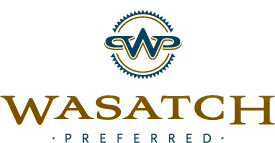Changes are once again coming to Fed-OSHA’s Hazardous Communications Standard, which governs the handling of chemicals and other dangerous substances.
OSHA’s final rule, which takes effect July 19, 2024, will bring the standard in line with the latest update to the United Nations’ Globally Harmonized System of Classification and Labelling of Chemicals.
The update revises criteria for the classification of certain health and physical hazards, as well as updating labeling requirements and safety data sheets (SDSs), among other changes.
OSHA said it had updated the HazCom standard “to better protect workers by improving the amount and quality of information on labels and safety data sheets and allow workers and first responders to react more quickly in an emergency.”
Affected firms will have to update any alternative workplace labeling as well as their HazCom program, and provide any additional employee training for newly identified physical, health or other hazards.
Compliance deadlines are staggered:
First: Chemical manufacturers, importers or distributors evaluating substances will have to comply by Jan. 19, 2026, while those that evaluate mixtures will have to comply by July 19, 2027.
Second: Other employers will have to comply six months after those dates: July 19, 2026 for those that handle, store or use substances, and Jan. 19, 2028 for mixtures.
It’s important for employers to stay up to date on the HazCom standard to protect their workers. Labels and SDSs are often the first indication to a worker that they are handling a hazardous chemical, so it is imperative that they be as accurate and complete as possible.
What the rule does
The new rule ensures that OSHA’s HazCom standard jibes with the Global Harmonized System, which is used in most developed and many developing countries around the world. It provides consistent definitions of hazards, specific criteria for labels, and a specific format for safety SDSs.
It should be noted that the new classification criteria only affect SDSs and labels for certain products (aerosols, desensitized explosives and flammable gases). If your firm handles any of these you will have to ensure that your labels and SDSs for select hazardous chemicals are updated accordingly.
Some of the highlights of the rule:
Labeling — It updates labeling requirements for certain very small containers and bulk containers to ensure the labels are comprehensive and readable.
Manufacturers must also only provide the updated label for each individual container with each shipment once the product reaches its customer. Warehousing employees will not be required to open sealed pallets and boxes of containers to relabel them or repackage the product in preprinted bags.
Flammable gas addition — The flammable gas hazard class gets a new hazard class (desensitized explosives), as well as new hazard categories:
- Unstable gases in the Flammable Gases class
- Pyrophoric gases in the Flammable Gases class, and
- Nonflammable aerosols in the Aerosols class.
New and revised definitions — There are a number of definitions that are being revised or which are new altogether.
Employer takeaway
HazCom citations are one of the most common citations that OSHA issues. If your operations handle chemicals, you should take the opportunity now to review your HazCom programs and plan for compliance by the deadline that affects your company.
